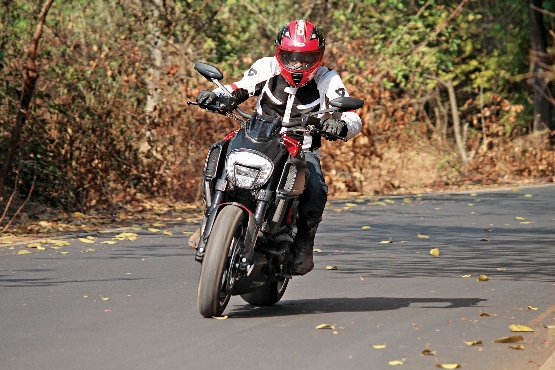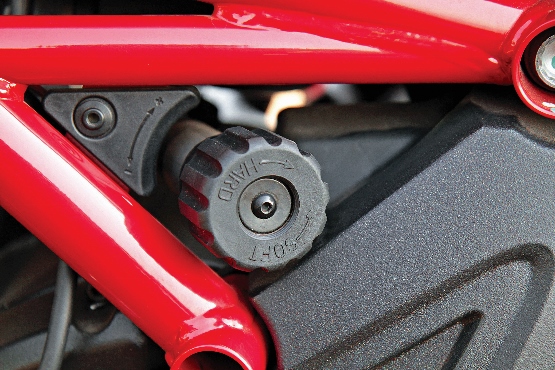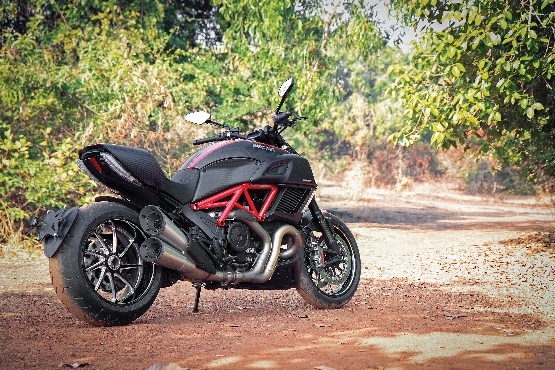
Like all Ducatis to have come before it, and like all those that will come in the years to follow, the Diavel is an excellent handler. Sweeping bends or hairpins, there’s never a problem. The bike feels confident and well in its stride at all times. On a straight it will comfortably nudge past the ton (100 mph or 160 km/h) without so much as a shake of the head. It’s as steady as a rock. At the same time, the fully adjustable 50-mm Marzocchi forks combine with the fully adjustable rear shock to return a pliant ride quality. They smooth out the bumps and ruts to a degree where you’re not isolated entirely from the road, but, at the same time, there’s no case of road rash on the bum. And if you don’t like the setting, you can always adjust the rear shock, courtesy that easy-to-reach-and-use rotary knob on the bike’s left side, close to your left leg.

Braking duties on the bike are taken care of by a pair of 320-mm dia semi-floating discs with radially attached Brembo Monobloc four-piston callipers up front and a 265-mm disc with a two-piston calliper. ABS, of course, is standard equipment, and much appreciated too. There’s plenty of feel at the lever and enough bite in the brakes to chew a bit of the tarmac should you need to haul on the stoppers in haste. Adorning the Marchesini forged and machined nine-spoke 17” wheel at the front is a 120/70 ZR17 Pirelli Diablo Rosso II. However, the 17” rear wheel, also a Marchesini forged and machined nine-spoke, sports a massive 240/45 ZR17 Pirelli Diablo Rosso II. Needless to say, the tyres provide excellent grip.
Having had my fill of riding the bike (including a few extra photo runs just so I could ride it some more), I was honestly more than just a little reluctant to hand it back. To say that the Ducati Diavel is a great bike would be a sort of injustice to the machine. It’s a brilliant motorcycle. Rumours are that the bike will sport a sub-Rs 20 lakh figure. That too, on road. What more could one ask for?



Leave a Reply